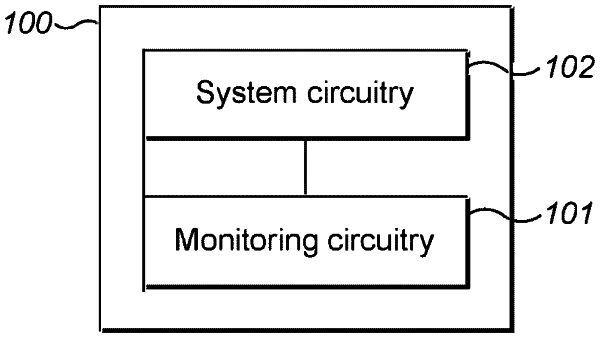| CPC G06F 11/348 (2013.01) [G01R 31/318513 (2013.01); G06F 11/349 (2013.01)] | 19 Claims |

|
1. A method of identifying a cause of an anomalous feature measured from system circuitry on an integrated circuit (IC) chip, the IC chip comprising the system circuitry and monitoring circuitry for monitoring the system circuitry by measuring features of the system circuitry in each window of a series of windows, the method comprising:
(i) identifying a candidate window set in which to search for a cause of the anomalous feature from a set of windows prior to an anomalous window comprising the anomalous feature;
(ii) for each feature of the measured features of the system circuitry:
(a) calculating a first feature probability distribution of the respective measured feature for the candidate window set;
(b) calculating a second feature probability distribution of the respective measured feature for window(s) not in the candidate window set;
(c) comparing the first feature probability distribution and the second feature probability distribution; and
(d) identifying the respective measured feature in a timeframe of the candidate window set as the cause of the anomalous feature when the first feature probability distribution and the second feature probability distribution differ by more than a threshold value;
(iii) iterating steps (i) and (ii) for further candidate window sets from the set of windows prior to the anomalous window; and
(iv) outputting a signal indicating the measured feature(s) of step (ii)(d) identified as the cause of the anomalous feature.
|